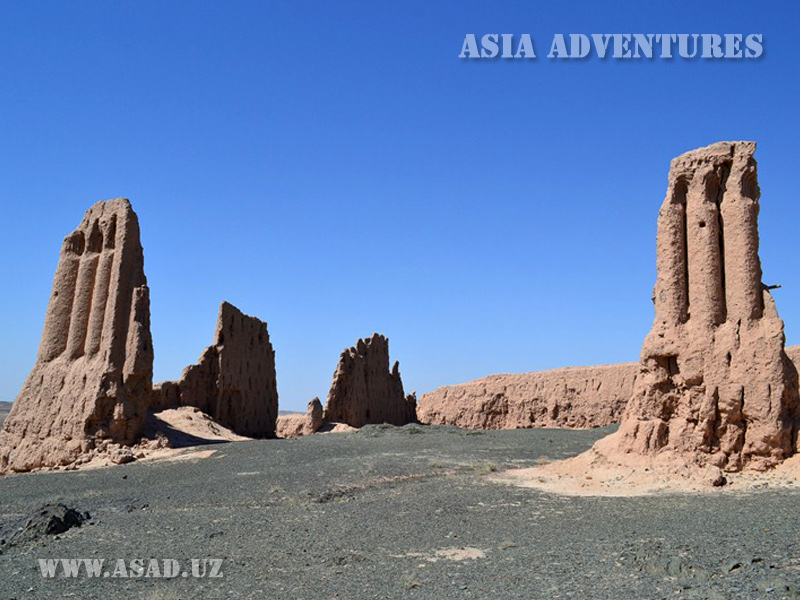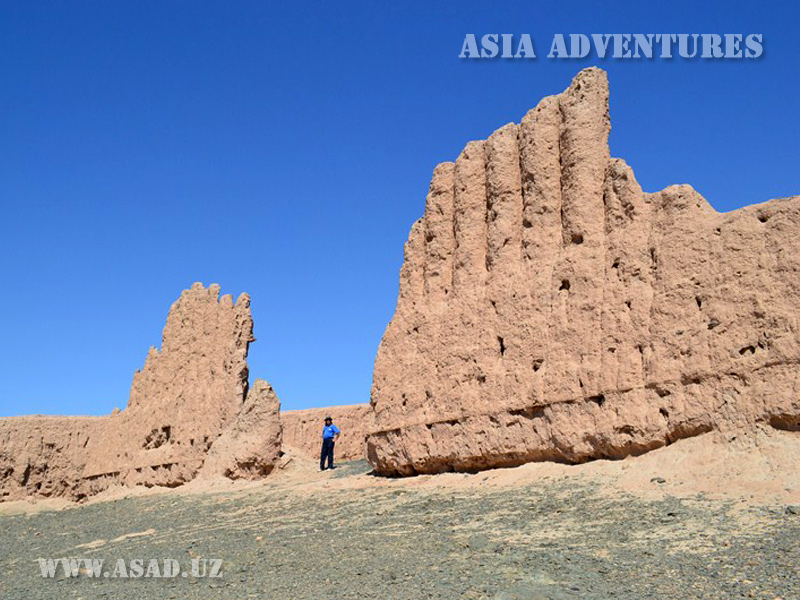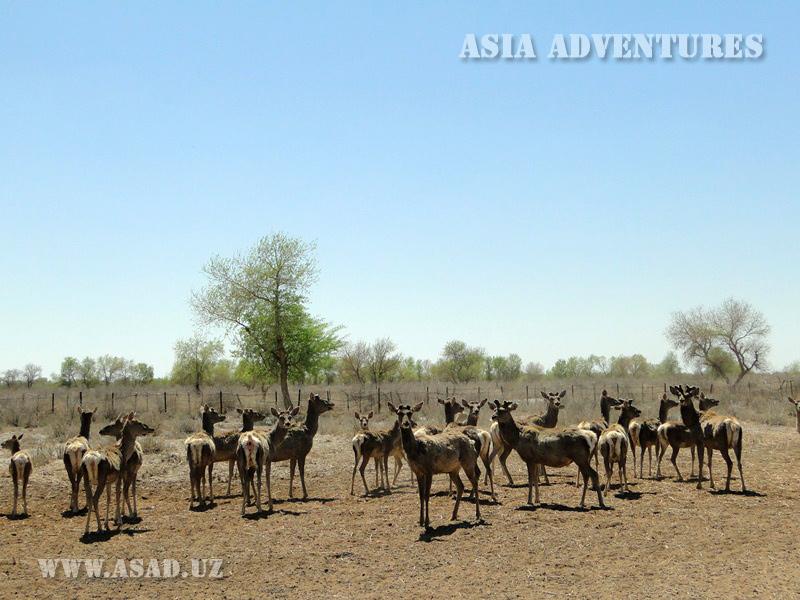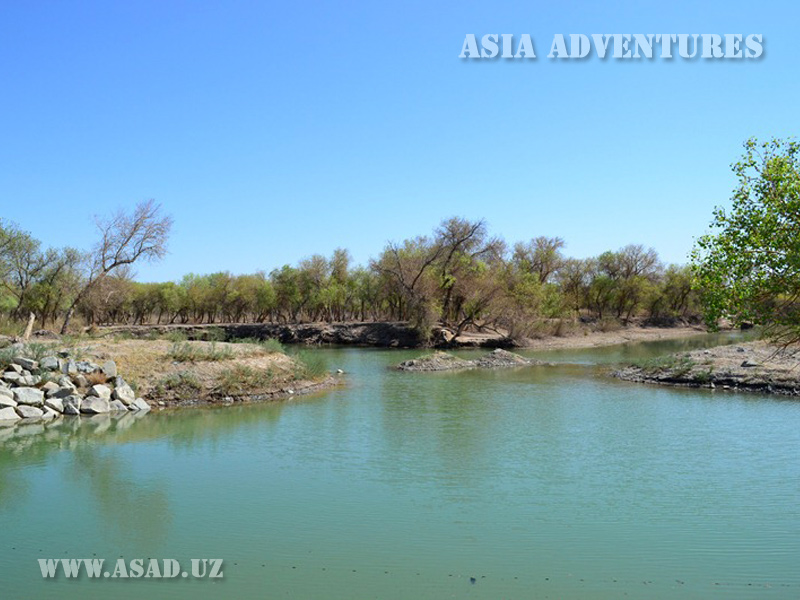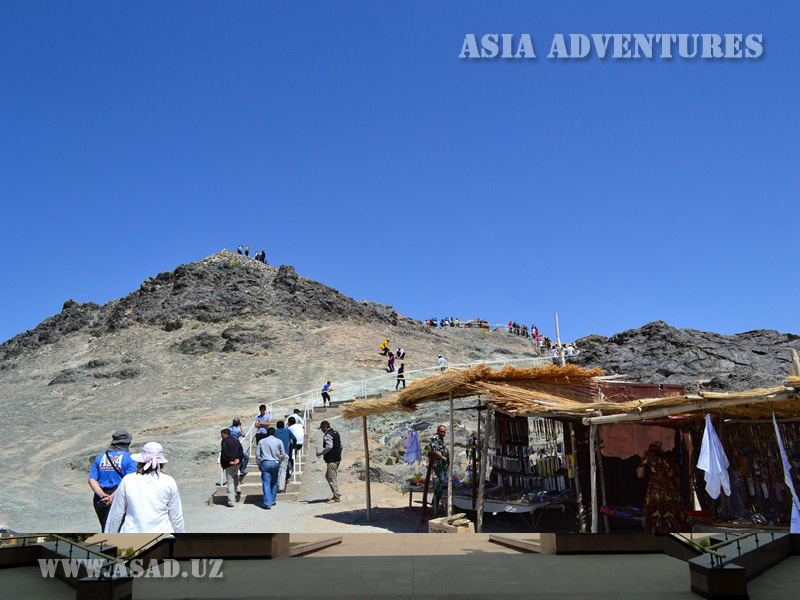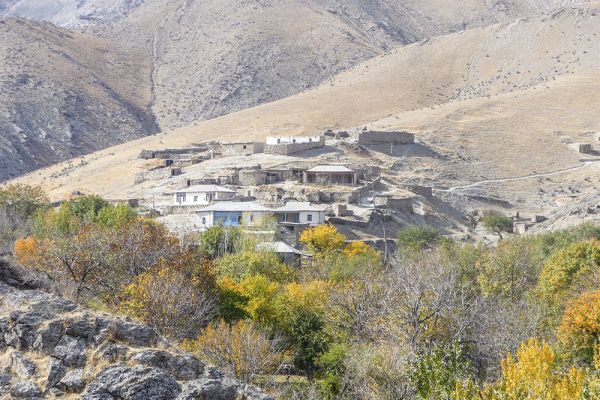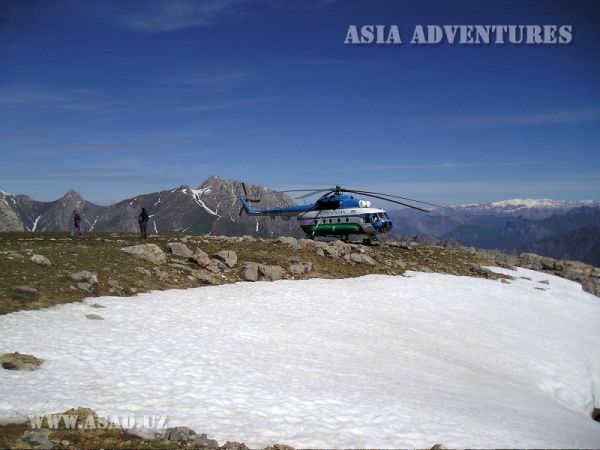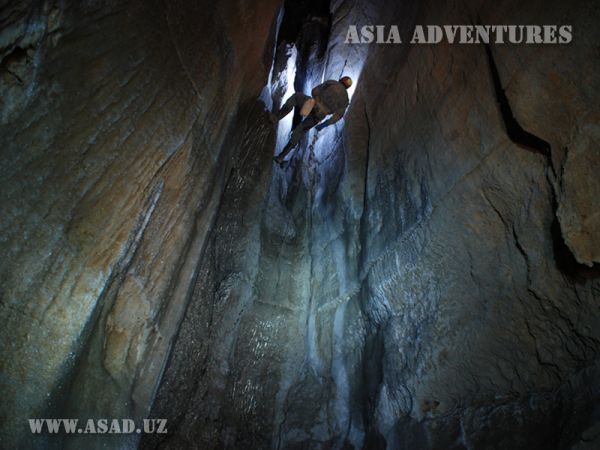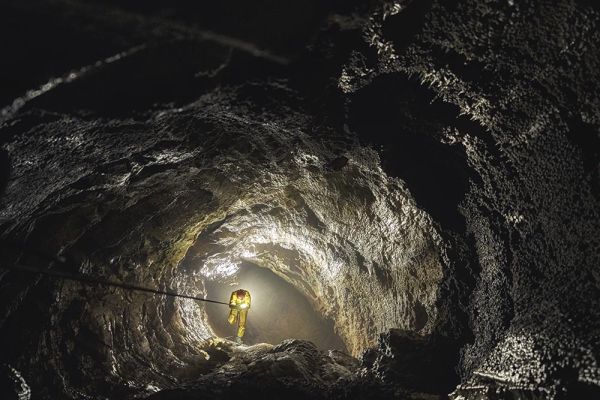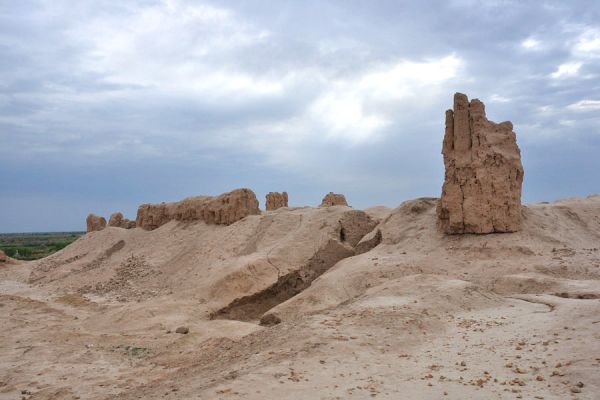Nizhny Amudarya State Biosphere Reserve
The Nizhny Amudarya State Biosphere Reserve was established in Uzbekistan in 2013 on the basis of the abolished Badai-Tugai State Reserve and additionally transferred land territories of Beruniysky and Amudarya districts of Karakalpakstan with a total area of 68717.8 hectares.
It is located in the lower reaches of the Amu Darya on the right bank of the river at the foot of the Sultan-Wizdag range. The territory has an egg-shaped shape, oriented from southeast to northwest. From the south it is washed by the Amu Darya River and borders the Tugai Taldyk forest, and from the north and northwest it is surrounded by a tributary of the Amu Darya - Kokdarya. The protected area of the reserve (a zone with a strict protection regime) is 11568.3 hectares. The main purpose of the reserve is to ensure the protection, reproduction and sustainable use of the resources of Tugai forests in the delta of the Amu Darya River, conducting scientific research and monitoring, socio-economic development of the region, and the protection of cultural values. The buffer zone is 6,731.4 hectares and is intended for the conservation, reproduction and restoration of natural objects and complexes. The lands of the buffer zone are owned or used by other land users, landowners and tenants.
The climate in the reserve is sharply continental. Winter is characterized by the greatest severity and the lowest temperatures in Uzbekistan. The air temperature is very variable, ranging from +44.4°C to -30°C. Annual precipitation does not exceed 100 mm. The average temperature in July is +27-28oC. Maximum temperatures exceed +40-41oC. The total solar radiation is about 150 kcal/cm2.On average, up to 80 mm of precipitation falls per year, in the form of rain and snow. Autumn (October-November) passes very quickly. There is little precipitation at this time.
167 species of higher plants have been identified on the territory of the reserve. In a significant part, tugai is intertwined with creepers: oriental clematis, Siberian cinanhum, Persian asparagus and Lehmann's midge. Tugai is poor in undergrowth, and grassy vegetation is also very poorly developed here. However, ancient Greek elements such as erianthus, veinik, imperata are represented here. In moistened areas, common reed, naked licorice, rough kendyr, large plantain, lanceolate plantain are found. The salt marshes are home to karabarak, coastal salt marsh, Turkmen's swede, bristle-haired comb and, in some places, common yantak, associated with a saline substrate.
The wildlife of the reserve is represented by typical inhabitants of Tugai forests.
More than 20 species of fish live in the waters of the Amu Darya River, which washes the territory of the reserve, and in the tributaries of the Kokdarya River. The most valuable of them are: Amudarya shovelnose, Aral thorn, barbel, bream, rapeseed, carp, catfish, white amur, carp.
Reptiles are represented here in greater numbers. To date, 13 species of reptiles have been discovered here. Steppe tortoise and steppe agama are the most common on the outskirts of Tugai. The desert bald-eye is common in tugai thickets among last year's fallen leaves of turanga. At dusk, a Caspian gecko can be seen hunting in the ruins of mud-brick houses. Typical animals of the reserve include the swift and linear foot-and-mouth. Snakes are relatively rare compared to lizards. Among the snakes on the Kokdarya Bayou, among the boulders and roots of trees, a water snake is found, and an arrow snake was found among the willow thickets. The patterned runner dwells among the herbaceous vegetation of the Tugai. The other two runners, striped and spotted, are found in the fortress wall of Dzhampyk-kala, a medieval fortress.
Birds of the reserve. The presence of a large and diverse selection of nesting sites (trees, shrubs, grassy vegetation, coastal cliffs and shoals on the Amu Darya) determines the diversity of the bird population of the reserve. Tugai thickets serve as a resting and feeding place for passing birds. A total of 91 species of birds have been registered here. By the nature of their stay, there are 39 species of nesting birds, 16 species of sedentary birds, 18 species of wintering birds, and 18 species of flying birds. Sedentary species in Badai-Tugai include barrow, common and steppe kestrel, Khiva pheasant, blue pigeon, little turtle dove, house owl, eared owl, white-winged woodpecker, crested lark, magpie, black crow, jackdaw, gray (Bukhara) tit, common myna, field sparrow. In the spring, they are joined by a large number of birds that come to nest. The common croaker, ogar, mallard, snake-eater, black kite, Turkestan tube falcon, peregrine falcon, avdotka, white-tailed piglet, stilt-tailed tern, black, river and small terns, brown pigeon, common turtle dove, Turkestan cuckoo, desert owl, bulbous nightjar, kingfisher, golden and green squints, blue-lark nest in tugai forests., hoopoe, black swift, coastal swallow, Indian oriole, black-headed remez, village swallow, Turkestan western nightingale, great and southern babblers, Kazakhstan warbler, red warbler, masked and black-headed yellow wagtail, The shrike is a vulcan. In winter, you can constantly find such birds arriving from the northern regions as the dern, goshawk, East Siberian sparrowhawk, common buzzard, marsh owl, black and horned larks, gray crow, thrushes (dern, mountain ash, white-browed, black), common pipit, Turkestan starling, South Siberian and Kazakh reed warblers. oatmeal and common oatmeal. During the difficult winter period, a keklik, a typical inhabitant of the mountains, sometimes flies from the Sultan-Wizdag ridge. Many bird species stop for a short rest in Badai Tugai in early spring, when flying north. These include the gray flycatcher, common redstart, black-tailed and red-backed, common burrow, Siberian tenkovka, green warbler, gray warbler, stone sparrow, finch, yurok, finch, common lentil. The beauty of the reserve is certainly the Khiva pheasant.
There are 58 species of mammals in the reserve. From the order of insectivores, the long-eared hedgehog and the piebald putorak are found here. Among the bats there is a mustachioed moth, a dwarf bat, a two-colored skin, and a tolai hare. The plate-toothed rat, house mouse, midday gerbil, and others are common among rodents. The jackal, which hides in the rugged tugai, and the badger, which also lives here among the woody and shrubby vegetation, are common predators. In the reserve, you can occasionally find a reed cat that lives in the coastal Tugai. The reserve's ungulates are represented by two species: wild boar and Bukhara deer.
Bukhara deer is reacclimatized in the reserve. He once inhabited the basins of the Amu Darya and the lower reaches of the Syr Darya. The population of the Bukhara deer was undermined as a result of predatory extermination, by the early 1970s this deer had practically disappeared in the wild. One of the first steps to restore the disappeared animals in Uzbekistan was the reacclimatization of deer in the Badai-Tugai Nature Reserve. In May 1976, three deer (two females and one male) from the Ramit Reserve (Tajikistan) were brought to the reserve. They were placed in specially constructed mesh enclosures. In December 1979 9 more deer were imported. All the deer took root and gave offspring. After overexposure in enclosures, some of the deer were released into the Tugai forest. Currently, the number of feral Hangul deer at large is about 400 individuals. Deer began to settle independently in the neighboring tugai massifs, both on the right and left banks of the Amu Darya. Currently, the reserve is the keeper of the world's largest population of Bukhara deer and therefore can be considered globally significant.
